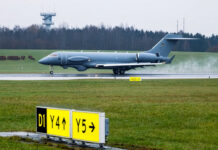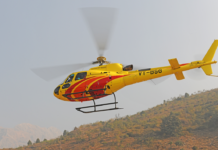After the first dive off Cherbourg last July, the government and industrial teams of the program conducted various sea trials to first ensure that the submarine navigates safely and then test its technical and operational performance.
Le Tourville thus achieved:
– static dives, i.e. submerged without powered movement, in order to check the weight and stability of the submarine on the one hand, and to carry out safety and proper functioning tests of the various systems on the other hand;
– surface trials, allowing the submarine’s maneuverability and speed to be tested;
– diving tests, to verify the maneuverability capabilities at different immersion depths, as well as the safety and operation of the installations under water, including its nuclear boiler room;
– underwater tests of its combat system and communication systems.
With a view to admission to active service in 2025, the SNA will begin a long-term operational deployment phase to verify all of the operational capabilities of the submarine integrated into a naval force.
The Toulon naval base will remain the base port of the SNA Tourville , which joins the 4 other SNAs operated and implemented by the Nuclear Attack Submarine Squadron (ESNA). The third submarine in the Barracuda program, it represents the tipping point towards the “all Suffren” model. The Navy now has:
– 3 Barracuda-type SNAs ( Suffren, Duguay-Trouin and Tourville );
– 2 Ruby-type SNAs ( Amethyst and Pearl , the Emerald having recently reached Cherbourg for disarmament).
The date of November 27 coincides with Submariner’s Day, established since 2003 in memory of the five submarines, including the Casabianca , which escaped from the Toulon naval base on November 27, 1942 following the invasion of the free zone by the troops of the Nazi regime.













